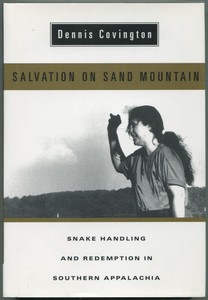


While these childhood moments set such writers on a path for understanding themselves and southern culture, the literal and figurative separation from the South enables these writers to write about race in such a forthright manner. There is a return journey to anguish that few of us are released from making. The human heart dares not stay away too long from that which hurt it most. We ran away from it but we came back like a hurt animal to its wound, or a murderer to the scene of his sin. This haunted childhood belongs to every southerner of my age. In the second paragraph of Killers of the Dream, Smith explains:

While these moments of racial awareness may center on pivotal childhood experiences-Lumpkin witnessing her father abusing a black servant and Smith being told that white and colored children cannot play together-they are recounted by an adult who has fled the South and metaphorically returned through the writing of the memoir. Such memoirs by southern whites often come to terms with a moment of crisis centered on race. A pattern typified in Katherine Du Pre Lumpkin’s The Making of a Southerner and Lillian Smith’s Killers of the Dream, southern memoirs often depict a writer who flees to find herself, only later to emerge as a more objective critic of the South. Publishers Weekly described the text as "a captivating glimpse of an exotic religious sect." Booklist described it as a "fascinating work catches the essence of a place, southern Appalachia, its people, and the author's personal journey into his past.Southern memoirs often follow a conventional pattern: a writer grows up in the South, experiences a crisis of identity with the cultural values, and eventually overcomes this tension by migrating North, through education, or both. Salvation on Sand Mountain was a non-fiction finalist for the National Book Award. That then forms into caring for Summerford, himself. It can be described as a memoir of the author's experiences with the snake-handling Church of Jesus with Signs Following and his temporary participation in their church.Ĭovington submerged himself into this congregation, and began to care tremendously for their beliefs. The book, which is written in the first person, begins in a neutral, journalistic style and becomes more emotional as the author is drawn to the people and practices of the church. The book was a finalist for the National Book Award. The storyline follows the author as he goes from covering the trial of Glenn Summerford to experiencing a snake handling church in Appalachia. Salvation on Sand Mountain is a 1995 nonfiction book by Dennis Covington.


 0 kommentar(er)
0 kommentar(er)
